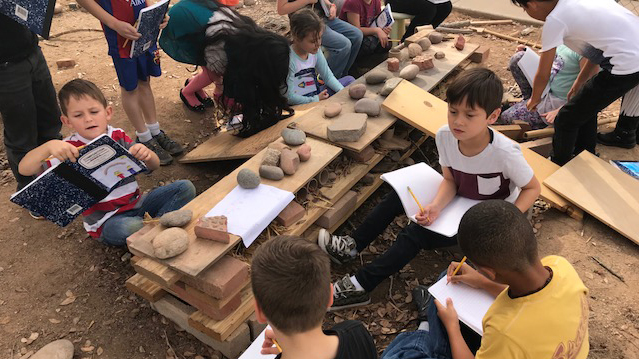During my last seven years of teaching, I taught a multiage 4th/5th grade class. They were some of my best and most memorable years as a teacher. In fact, I’m still in touch with many of those students, who are now in their twenties. Over the years, Awakening Seed has incorporated the multiage approach when it naturally seems to be the optimum choice for grouping students. Often the decision is driven by other factors, yet provides opportunities that might have been overlooked otherwise. For example, about twelve years ago our elementary classes were becoming increasingly smaller each year (in large part due to the rise of free charter schools). At the same time, we had long waiting lists for our early preschool classes. Although we offered 5th grade, seldom more than two or three students remained for that last year. After much discussion, we made the decision to add our Early 3s class and create two multiage elementary classes for our oldest students. In addition to the 1st/2nd and 3rd/4th classes, we established a flexible plan for our kindergarten class, keeping it open to be a K-1, depending on enrollment. In the event that a child spent his/her first grade year in the K-1, we have consistently made it clear that they’d move to the next class as a second grader. This arrangement has served our students and the school well.
The advantages for students are many. One of the most important ones is that second-year students have a chance to be the leaders. Time and time again, I’ve seen this experience completely change a child’s life. It was a confidence builder that might have been missed otherwise. Second-year students become role models and learn by teaching peers everything from classroom routines to mathematical processes. The second year allows for refinement, enhanced understanding, and enrichment opportunities. On the other hand, younger children who need more challenge can be grouped for instruction with older students. Learning in a multiage classroom is naturally more individualized and children are encouraged to move at their own pace. A multiage classroom promotes inclusivity. Empathy is developed as children learn to establish relationships with different ages, thus removing the stigma of making friends with someone outside of a specific grade level.
As a teacher, the advantages of a multiage classroom are plentiful. I loved the opportunity to get to know my students in deeper ways. Having a student for two or more years presents an opportunity to develop a longer view of a child. During subsequent years, you don’t have to spend months getting to know a child, and you start where you left off at beginning of next year. Sometimes significant learning from the previous year comes to fruition the following year. It’s wonderful to witness this. I also appreciated knowing families for a longer stretch of time. I had multiple families with siblings two years apart. This gave us four consecutive years that have resulted in lifelong friendships.
Typical concerns we hear from parents are that their older child will be bored the second year and that the same curriculum will be repeated. At the Seed we use the emergent curriculum model, so no year is ever the same as the previous one. That said, we follow state learning standards, so basic skills are covered each year, even though they may be approached differently at times. A challenge for the multiage teacher is to provide a wider range of learning experiences within the classroom to address the various needs of students.
When you walk in a multiage classroom at the Seed, it’s unlikely you’ll be able to tell the level at which each student is working. Some instruction is done in ability groups; however, most assignments are given to everyone. Work is set up so that the expected outcome level is different for each grade level and/or individual student. It’s a customized education that overrides the “one size fits all” approach. If you’re interested in reading further about multiage classrooms, check out these links:
https://highmeadows.org/wp-content/uploads/2017/09/High-Meadows-School_Multi-Age-Primer.pdf
https://www.qcaa.qld.edu.au/downloads/p_10/ey_lt_multi-age.pdf
https://carrotsareorange.com/advantages-of-multiage-classrooms/
http://www.uwyo.edu/ecec/_files/documents/multi-age-benefits.pdf

